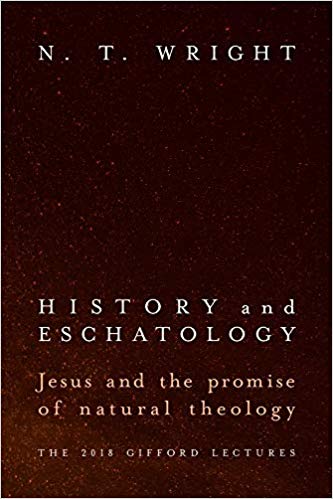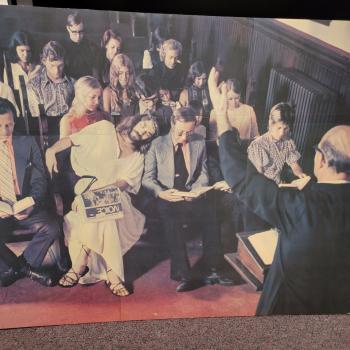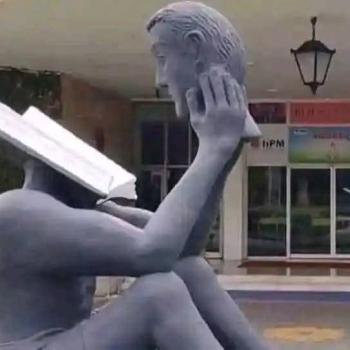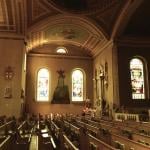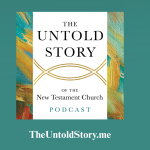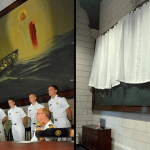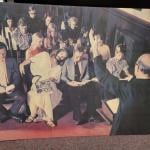“Genuinely historical study of the relevant Jewish and early Christian material produces a narrative about beliefs that were actually held and that, through the consequent human motivations, generated actual events, in the light of which we can and should construct a mature, genuinely grounded picture of Jesus and his first followers within their historical and cultural settings… The Gospel narratives do what Paul did in his travels; they displayed the Jesus-story as public truth, the truth of events which were told in coherent historical narratives by people who believed themselves called to the task of researching, editing, and arranging them so as to display (their view of) the meaning which these events carried.” (p. 107). The meaning was to be found in the events themselves. “In fact, they insist that God’s decisive saving self-revelation has taken place precisely not primarily in their writing but in the events to which they bear witness.”
Both in German Idealism, and in Marxist materialism it is assume there is a ‘ghost in the machine’, an inner guiding force, hidden laws, so that one can not only study what has happened but what will and must happen ‘according to the laws of historical development’. This approach to history that is sort of pantheistic in character has been called historicism– by looking at the past and present one could figure out ‘where history is going’ and how ‘to be on the right side of history’. Wright relies on the detailed critique of such historicism by Karl Popper not least because Popper does not see history as deterministic in character. But interestingly, this whole line of thinking leads to relativism ‘they believed X in that time and place because of factors A,B,C, but of course other times and places wouldn’t believe it.” (p. 109). Quoting F.M. Turner’s volume on European History, Wright notes that this line of historicist thinking leads to the conclusion “If all things are a product of a particular time and place and a particular culture or a particular stage of Absolute Spirit coming to understand itself, then the Bible as a document must also be similarly time bound.” (p. 111). Needless to say, early Christians, and Christians today beg to differ. Just because something is culturally conditioned does not mean it is culturally bound, or that its meanings can’t be faithfully conveyed in other cultures and times. “The early Christians lived within an ongoing history and looked for God to act within their world. But with the important exception of the fall of Jerusalem, they never claimed to read God’s actions off the surface of events.” (p. 116).
Wright is on target when he says that we continue to find new sources of information about the first century Jewish world (think Qumran scrolls) and therefore the task of producing a thick description of the context in which Jesus and others operated is constantly in process. “The task of history is not to substitute a new construct for the texts we possess but to understand better what those texts were saying all along.” (p. 119). Ongoing historical research is particularly good at defeating the defeaters and nay sayers. To give one example, Conzelmann argued that Luke’s narratives in Acts 19-21 reflected a later perspective, not least because ‘there were no Asiarchs in Paul’s day in Ephesus or Miletus’. Unfortunately for this view, I found and others have found stones with inscriptions about Asiarches in those very places, dating to the first century A.D. Conzelmann’s theories about Luke’s time of writing and his mistakes were wrong. A convenient fictional theory was disassembled by an inconvenient fact and truth.
On p. 121 Tom lays some of his most important historical cards on the table “Jesus’ resurrection precipitated a radical mutation within Jewish understanding of history and eschatology which then formed a new interpretative grid: Jesus’ rising was interpreted simultaneously as a very strange event within the present world AND the foundational and paradigmatic event within God’s new creation. This points to the fundamental argument I am making throughout this book. The idea of new creation operating from within the womb of the old, perhaps we should say within the tomb of the old— makes sense, albeit new sense within that Jewish world in which God’s space, time and matter and human space time and matter were designed to overlap and interlock.” Avoiding history when we do our theology is the first step to Gnosticism. Wright then says that later traditions, dogmas, and piety have introduced distortions and mistakes in our interpretation of the key Biblical texts. “That is why it simply will not do to appeal to tradition, whether dogmatic or pious. Dogma and piety alike need to submit, as the Reformers would insist, but even Aquinas might agree–to the original meaning of Scripture itself.” (p. 122). One cannot do history from above, as in ‘since God is sovereign then such and such must have happened in this way.’ No, the theology must arise out of the analysis of what actually did happen.


